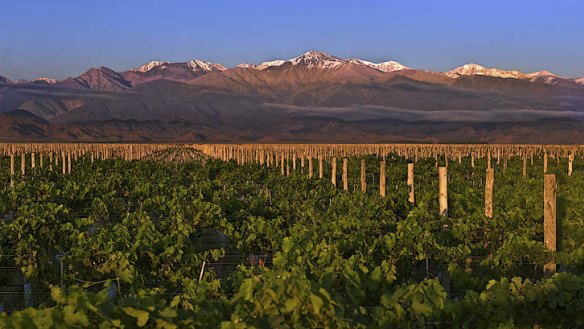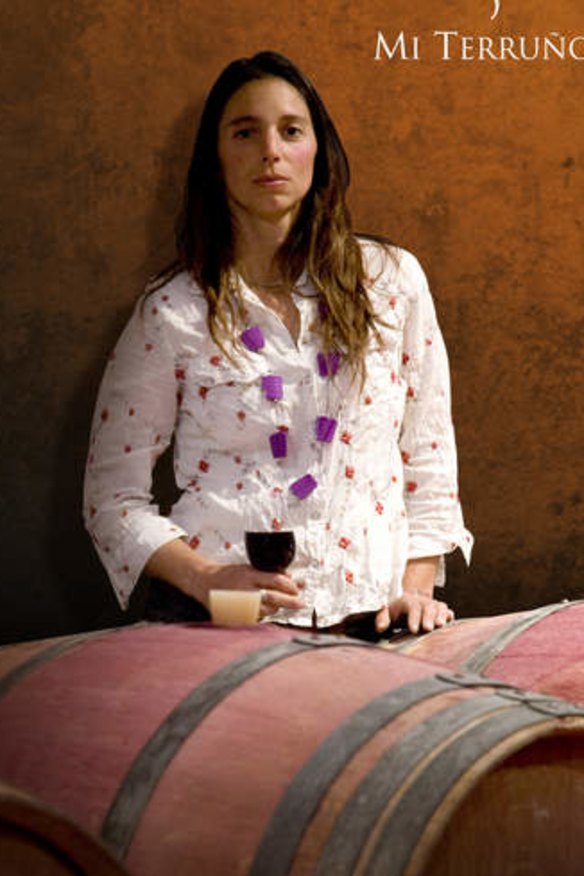Malbec grape has magical allure

This Thursday is World Malbec Day, a day nominated by Argentina's winemakers, but surely a day to celebrate the wine, wherever the grapes were grown. It's worth reflecting on Argentinian malbec, which is one of the great winemaking phenomena of our time.
Along with Marlborough sauvignon blanc and Napa Valley cabernet sauvignon, it has turned the wine world on its head, helping to redefine a grape variety and redraw its boundaries.
Malbec, no doubt, is the least famous of that trio. But, unlike the other two examples, it's more famous in its adopted home than its ancestral home in France. The vineyards themselves make a compelling and romantic visual story, spectacularly set against a background of the snow-capped Andes. The contrast between the desert-like landscape and the lush green vineyards is striking, all made possible by plentiful clean melt-water flowing off the mountains.

Argentina grows most of the world's key grape varieties, but none has distinguished itself like malbec. You could say it's a convincing example of terroir: the combination of the right grape in the right soil and the right climate, managed by the right people. It's an intersection of elements that leads to great wine.
Viticulture in Argentina dates from 1557, but malbec was not introduced until 1868.
Today it's the most widely planted and highest quality grape in the country, with 26,800 hectares of vines. Clearly the most important region for quality and quantity is Mendoza, where the vines nestle into the Andean foothills on a long north-south strip.
Altitude (very high, between 800 and 2000 metres), water (abundant and clean), and sunshine (abundant and bright due to few rain days, low humidity and low pollution) are the things that define Argentine winegrowing. Because of the dry climate, there is little fungal disease and little need for spraying, so producing organic wine is relatively easy - a boon in today's market.
As a comparison, most of Australia's quality vineyards are below 500 metres altitude and many are close to sea level; Argentina's best begin at 800 metres.
Malbec is native to the south-west of France, the Cahors region, but it's also important in Madiran and several other southern French appellations. It produces its best French wine in Cahors, but fate prevented its wines from enjoying anything like the fame of nearby Bordeaux. Malbec is not one of the world's, nor France's, major varieties: it is one of the five grapes commonly blended in Bordeaux reds, but always a minor ingredient. Indeed, it's mostly used as a blender in most places where it's grown, from Madiran (where it's blended with tannat) to our own Clare Valley (where it's blended with cabernet or shiraz).
It's a grape noted for its deep colour, tannin and structure. When underripe it can be unappealingly herbaceous, but I've seen few such wines from Argentina. When fully ripe, it can be utterly delicious: dark-coloured, full-bodied, well-structured and powerful, and capable of long ageing and partnering the most hearty foods. Think of Argentine beef … Serendipity?
Langhorne Creek is the Australian region best known for malbec. Bleasdale has for many years made the most consistently excellent pure varietal malbec. It has four labels at different prices, Double Take being its most expensive at $80. The superb 2012 vintage of this won a double-gold against daunting Argentinian competition at the 2013 Six Nations Wine Challenge.
Mendoza contains about 80 per cent of Argentina's malbec plantings. The northern region, Salta, has 10 per cent and five other regions share the final 10 per cent. They include the coolest and most southern region, Patagonia, and the country's second-largest region, San Juan, north of Mendoza.
Like great wine everywhere, the top rank is becoming expensive. Achaval Ferrer's famous Finca Altamira 2009 is $239 - but it is a magnificent wine.
Only a little less statuesque are Rutini Apartado 2008 ($167), Bodegas Trapiche Terroir Series Finca Jorge Miralles 2009 ($75) and Bodega Mi Terruno Mayacaba 2008 ($79).
These are wines of concentration and density, but also soft tannins, fleshy texture and complexity, which build with age, as do all great wines. Contrary to the situation some years ago, they are less likely to be over-endowed with new-oak character.
One of Argentinian malbec's distinctions is that good wines can be bought inexpensively, and here are a few.
Bodegas Trapiche Zaphy Organic 2013 ($16), Bodega Mi Terruno Uvas 2012 ($18), Bodegas Trapiche Oak Cask 2012 ($19), Rutini Trumpeter 2012 ($24), Jed Wines 2012 ($25), Ernesto Catena Tahuan 2011 ($27), Dolium Classico Agrelo 2012 ($28), Michel Torino Don David Reserve 2010 ($28), Dona Paula Estate Tupungato 2010 ($30), Serrera Reserva Tupungato 2010 ($30), Bodegas Trapiche Finca Las Palmas Gran Reserva 2010 ($38), Bodega del Fin del Mundo Reserva Neuquen 2012 ($39), Bodega Mendel Lujan de Cuyo 2009 ($55).
Retailers: Broadway Cellars, Glebe; Delicado Foods, McMahons Point; the Oak Barrel, Sydney; Cremorne Cellars; Amato's, Leichhardt; Bronte Cellars; Vinosonline.com.au
Restaurants: Bodega, Surry Hills; Porteno, Surry Hills; Estilo Buenos Aires, Haberfield.
National tipple
The Argentines have always been big wine drinkers: at the peak in the 1970s, they were drinking 90 litres per capita (these days it's still high at 40). So it was hardly news when, in 2010, the president declared wine to be the national drink.
